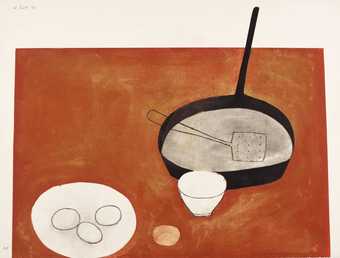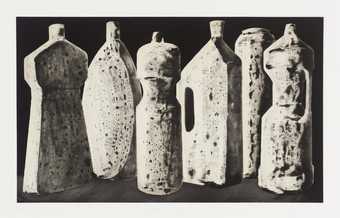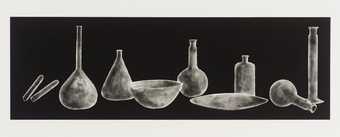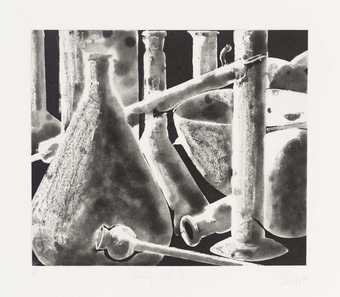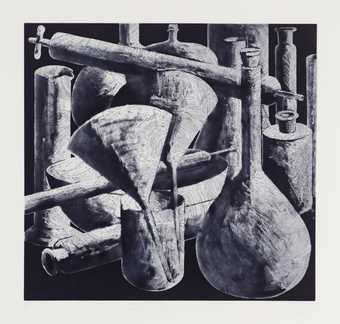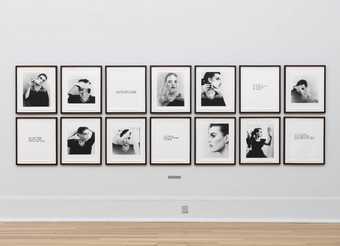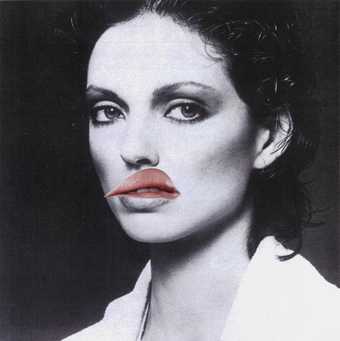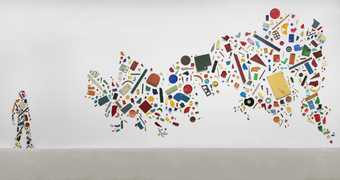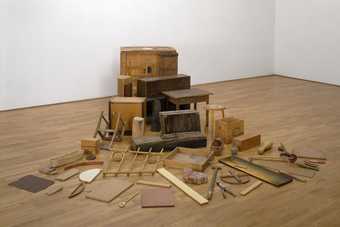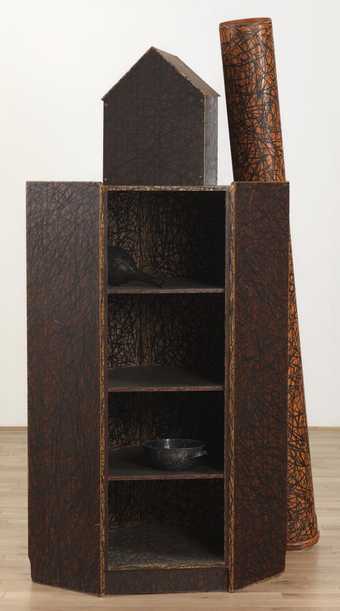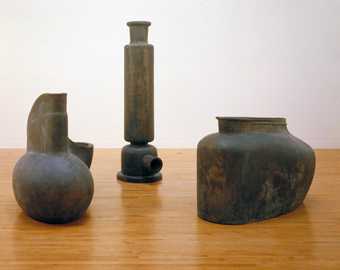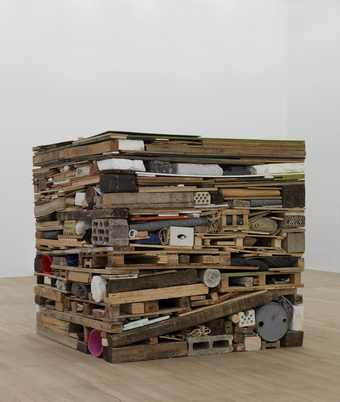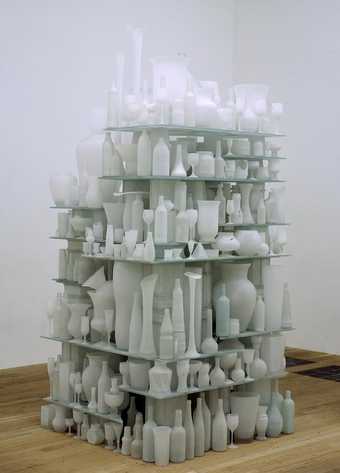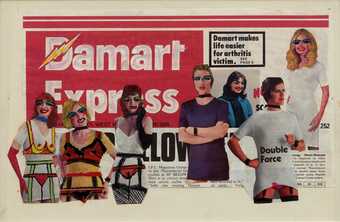
In Tate Britain
Prints and Drawings Room
View by appointment- Artist
- Tony Cragg born 1949
- Medium
- Aquatint on paper
- Dimensions
- Image: 300 × 347 mm
- Collection
- Tate
- Acquisition
- Purchased 1989
- Reference
- P77289
Summary
In August 1988, the sculptor Tony Cragg produced his first etchings, spending a little over two weeks at Crown Point Press in San Francisco. During this short time, he completed no fewer than thirty-five editions. Published by Crown Point Press and printed by Mark Callen, their subject matter ranges from laboratory utensils and plastic bottles (as in the Tate examples) to figure groups and landscapes, thus rehearsing the themes already familiar in Cragg's sculpture.
The Laboratory Still Life series comprises four editions, all of which are represented in Tate's collection. Numbers one and two were published in two states: black and white, as in the Tate examples, and red and black. All four prints depict an assortment of laboratory utensils such as bottles, beakers and test tubes, yet the compositions and treatments vary. Laboratory Still Life No. 1, State 1 (Tate P77289), print number six in an edition of thirty, presents an uncluttered arrangement of three utensils: a bowl and two bottles. The surfaces of the vessels are distinguished by soft tonal gradations. Their cloudy translucence, outlined delicately in white, contrasts with the solid black background and presents a strangely intimate still life. Laboratory Still Life No.2, State1 (Tate P77290), number nine in an edition of thirty, deploys a similar treatment of the subject matter, yet differs compositionally. As many as ten scientific instruments are lined up in a row. As in the first print, the objects appear to float ethereally against the soft, black void beyond. Laboratory Still Life No. 3 (Tate P77291) and Laboratory Still Life No. 4 (Tate P77291) are prints number three in an edition of twenty and number ten of forty respectively. They are tightly cropped, crowded compositions, with the objects filling the frame. Very little background is visible - just shards of blackness glimpsed between the melee of jumbled vessels.
Long fascinated by the symbiotic relationship between civilization and the natural world, Cragg depicts the utensils for scientifically knowing that world. Before becoming an artist, he trained as a scientist and spent a year working in a bio-chemistry laboratory. This experience has informed Cragg's use of science-related subject matter in works such as Tate's On The Savannah (Tate T05519). In her article on the Laboratory Still Life series, Susan Tallman writes: 'in popular imagination the laboratory is no longer a place of miraculous creativity and discovery, but a place where life is drawn apart and acted upon against its will.' (Tallman, p.18.) Insisting that what we call the 'natural world' is increasingly the realm of the man-made, Cragg presents science as a point of connection between the two.
Further reading
Susan Tallman, 'Laboratory Still Lives: 35 Prints by Tony Cragg', Arts Magazine, vol.63, February 1989, pp.17-18.
'Prints and Photographs Published', The Print Collector's Newsletter, vol.19, January-February 1989, p.228.
Tony Cragg: Sculpture 1975-90, exhibition catalogue, Newport Harbor Art Museum, Newport Beach 1990.
Helen Delaney
August 2001
Does this text contain inaccurate information or language that you feel we should improve or change? We would like to hear from you.
Explore
You might like
-
William Scott Still Life
1973 -
Tony Cragg Six Bottles (Large), State 1
1988 -
Tony Cragg Laboratory Still Life No. 2, State 1
1988 -
Tony Cragg Laboratory Still Life No. 3
1988 -
Tony Cragg Laboratory Still Life No. 4
1988 -
Linder She/She
1981, printed 2007 -
Linder She’s too much for my mirror
1979, 2008 -
Tony Cragg Britain Seen from the North
1981 -
Tony Cragg Axehead
1982 -
Tony Cragg Mineral Vein
1986 -
Tony Cragg On the Savannah
1988 -
Tony Cragg Stack
1975 -
Tony Cragg Cumulus
1998 -
Linder Untitled
1976 -
Linder Untitled
1976

